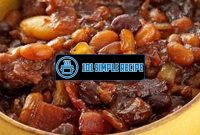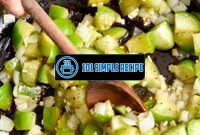Are you craving a warm, freshly baked loaf of bread that is not only delicious but also nutritious? Look no further! In this article, we will share with you the perfect recipe for making mouth-watering whole wheat bread. Whether you are a seasoned baker or a beginner in the kitchen, you will find this recipe easy to follow and the result incredibly satisfying. So put on your apron, roll up your sleeves, and let’s get started on this delightful baking adventure. Get ready to fill your home with the irresistible aroma of freshly baked whole wheat bread! ✨

Understanding Whole Wheat Bread
When it comes to making a tasty and healthy sandwich, one of the best choices you can make is whole wheat bread. Understanding the basics of whole wheat bread and why it is a smart choice for your sandwiches is essential. So, let’s dive in and explore what whole wheat bread is all about.
What is Whole Wheat Bread?
Whole wheat bread is a type of bread that is made from whole grains, specifically whole wheat kernels. Unlike refined white bread, which is made from wheat that has had its bran and germ removed, whole wheat bread contains all parts of the wheat kernel, including the nutrient-rich bran and germ.
Whole wheat bread offers a nutty and hearty flavor, along with a denser texture compared to white bread. It is also available in various forms, such as sliced bread, rolls, bagels, and more, making it suitable for any type of sandwich creation.
Benefits of Whole Wheat Bread
Now that you know what whole wheat bread is, let’s explore its numerous benefits that make it a great choice for your sandwiches:
- Rich in Fiber: Whole wheat bread is an excellent source of dietary fiber, which aids in digestion and helps maintain a healthy weight. Fiber also keeps you feeling full for longer, making it an ideal choice for those looking to manage their appetite.
- Loaded with Nutrients: Whole wheat bread is packed with essential nutrients, including vitamins (such as vitamin B), minerals (like iron and magnesium), and antioxidants that contribute to overall well-being.
- Healthier Heart: Regularly consuming whole wheat bread has been associated with a reduced risk of heart disease and lower cholesterol levels. The fiber, antioxidants, and healthy fats present in whole wheat bread promote heart health.
- Stabilizes Blood Sugar: Due to its high fiber content, whole wheat bread has a lower glycemic index compared to refined white bread. This means it causes a slower and more gradual increase in blood sugar levels, making it a better choice for people with diabetes or those aiming to manage their blood sugar levels.
- Boosts Energy: The complex carbohydrates present in whole wheat bread provide a steady release of energy, keeping you fueled throughout the day. It’s a great choice for athletes or anyone in need of a long-lasting energy source.
Choosing the Right Whole Wheat Bread
Now that you understand the benefits of whole wheat bread, it’s important to know how to choose the right one:
- Look for the Term “Whole Wheat”: When selecting a loaf of bread, make sure the label says “whole wheat” to ensure you are getting the entire grain. Be cautious of terms like “multigrain,” which may not necessarily mean it’s made from whole wheat.
- Check the Ingredients: Read the ingredient list and look for whole wheat as the first or main ingredient. Avoid bread that contains refined grains or additives.
- Consider the Texture: Whole wheat bread comes in different textures, from soft to hearty. Choose the texture that suits your preference and the type of sandwich you are making.
- Freshness Matters: Opt for freshly baked whole wheat bread whenever possible. It’s not only tastier but also likely to contain fewer preservatives.
In conclusion, whole wheat bread is an excellent choice for your sandwiches due to its nutritional value and health benefits. By understanding what whole wheat bread is, its benefits, and how to choose the right one, you can enjoy delicious and wholesome sandwiches every time. So, next time you’re making a sandwich, reach for the whole wheat bread and savor the goodness it offers.
Making Whole Wheat Bread from Scratch
Discover the satisfaction of baking your own whole wheat bread for sandwiches. Whether you’re a seasoned baker or a beginner in the kitchen, making homemade bread is a rewarding and delicious experience. By following these steps, you can create the perfect loaf of whole wheat bread that will elevate your sandwich game to a whole new level.
Gathering the Ingredients
To make your own whole wheat bread, you’ll need a few basic ingredients. Here’s what you’ll need:
- 4 cups of whole wheat flour: Choose a high-quality flour to ensure a flavorful and nutritious loaf.
- 2 teaspoons of active dry yeast: This ingredient is essential for the bread to rise and create a light and fluffy texture.
- 2 tablespoons of honey: Honey provides a touch of sweetness to balance out the nutty flavor of whole wheat.
- 1 ½ teaspoons of salt: Salt enhances the taste of the bread and helps with the gluten development.
- 2 tablespoons of olive oil: This ingredient adds moisture and richness to the bread.
- 2 cups of warm water: The water should be warm but not too hot to activate the yeast properly.
Note: Ensure that all of your ingredients are at room temperature for optimal results.
The Art of Mixing and Kneading
Once you have gathered all your ingredients, it’s time to start mixing and kneading the dough. Follow these steps for success:
- In a large bowl, combine the whole wheat flour, yeast, and salt. Mix well.
- In a separate bowl, whisk together the honey, olive oil, and warm water.
- Pour the wet ingredients into the dry ingredients. Stir until the dough starts to come together.
- Transfer the dough onto a lightly floured surface. Begin kneading the dough by folding it over and pushing it away with the heel of your hand.
- Continue kneading for about 10 minutes or until the dough becomes smooth and elastic.
Note: Kneading the dough helps to develop the gluten, which gives the bread its structure and texture. It may seem tedious at first, but it’s an essential step to achieve the perfect loaf of whole wheat bread.
Rising and Baking the Bread
After kneading the dough, it’s time to let it rise and then bake it to perfection. Here’s what you need to do:
- Place the kneaded dough in a greased bowl and cover it with a clean kitchen towel. Let it rise in a warm, draft-free area for about 1 to 2 hours, or until the dough has doubled in size.
- Once the dough has risen, gently deflate it and shape it into a loaf. Place the shaped dough in a greased bread pan.
- Cover the pan with the kitchen towel and let it rise again for another 30 minutes to 1 hour.
- Preheat your oven to 375°F (190°C) during the second rise.
- When the dough has risen for the second time, remove the towel and transfer the bread pan to the preheated oven.
- Bake for approximately 30 to 35 minutes or until the bread is golden brown and sounds hollow when tapped.
- Once baked, remove the bread from the pan and let it cool completely on a wire rack before slicing.
Now, you have a beautiful, homemade loaf of whole wheat bread ready to be used for delicious sandwich creations. The aroma and taste of freshly baked bread will take your sandwiches to the next level.
Note: For added flavor and texture, you can customize your whole wheat bread recipe by adding seeds, nuts, or dried fruits to the dough before kneading.
With these simple steps, you can enjoy the satisfaction of baking your own whole wheat bread for sandwiches. No store-bought bread can compare to the taste and quality of homemade bread made with love. So, roll up your sleeves, gather your ingredients, and start baking your way to sandwich perfection!
If you’re in the mood for a refreshing beverage, try this punch bowl recipe that pairs well with your sandwich.
Adding Flavorful Variations to Whole Wheat Bread
When it comes to making whole wheat bread, there are countless ways to add flavorful variations that will take your bread to a whole new level. Experimenting with different ingredients and techniques can help enhance the taste and texture of your homemade bread. In this section, we will explore creative ways to elevate your whole wheat bread and make it even more delicious.
Incorporating Seeds and Nuts
Adding seeds and nuts to your whole wheat bread not only adds a delightful crunch but also boosts its nutritional value. You can experiment with a variety of options such as pumpkin seeds, sunflower seeds, flaxseeds, or chopped almonds. These additions not only add texture but also provide additional protein, healthy fats, and fiber. Moreover, they infuse a nutty flavor to your bread that pairs perfectly with the whole wheat base.
- Pumpkin seeds: These tiny powerhouses are packed with essential nutrients like zinc and magnesium, and add a pleasant crunch to your bread.
- Sunflower seeds: Loaded with healthy fats, sunflower seeds offer a rich and nutty taste to your whole wheat bread.
- Flaxseeds: Apart from their nutty flavor and crunchy texture, flaxseeds are a great source of omega-3 fatty acids.
- ⭐ Chopped almonds: Almonds add a delicate crunch and a subtle sweetness to your bread, making it oh-so-delicious.
Experimenting with Sweet and Savory Additions
To give your whole wheat bread a unique twist, you can experiment with a range of sweet and savory additions. These additions not only add depth of flavor but also make your bread versatile, whether you want to enjoy it as a sandwich or as a standalone snack. Get creative and try different combinations, such as:
- Dried fruits: Dried cranberries, raisins, or apricots can bring a burst of sweetness and chewiness to your bread.
- Cheese: Adding shredded cheese, such as cheddar or Parmesan, can give your bread a savory and cheesy goodness.
- Herbs: Finely chopped fresh herbs like rosemary, basil, or dill can infuse your bread with aromatic flavors.
- ️ Spices: Experiment with spices like cinnamon, nutmeg, or cardamom to add warmth and complexity to your bread.
Using Different Flours for Unique Flavors
While whole wheat flour serves as the base for your bread, incorporating different flours can add unique and interesting flavors to the final product. Here are a few options to consider:
Note: When using alternative flours, it’s important to adjust the liquid ratio accordingly, as different flours absorb moisture differently.
- Rye flour: Adding rye flour to your whole wheat bread can lend a slightly sour and earthy flavor.
- Cornmeal: Incorporating cornmeal adds a subtle sweetness and a gritty texture to your bread.
- Spelt flour: Spelt flour has a slightly nutty taste and can help soften the dense texture of whole wheat bread.
- Chestnut flour: Chestnut flour adds a unique nutty and sweet flavor profile to your bread, perfect for the holiday season.
By incorporating these flavorful variations into your whole wheat bread, you can elevate its taste and create a bread that is both nutritious and delicious. Don’t be afraid to experiment and let your creativity shine in the kitchen. Every batch of bread can be a new culinary adventure!
Perfecting the Sandwich with Whole Wheat Bread
Discover the secrets to creating the ultimate sandwich using whole wheat bread as the base.
Building a Balanced Sandwich
A perfectly balanced sandwich is a work of art. It should have a harmonious combination of flavors, textures, and nutrients. Start with two slices of freshly baked whole wheat bread, which provides a wholesome and nutty flavor to the sandwich. Whole wheat bread is also rich in fiber, promoting a healthy digestive system and maintaining a steady blood sugar level.
Next, add a variety of ingredients to create a well-rounded sandwich. Include a source of protein, such as grilled chicken, sliced turkey, or tofu, to keep you feeling satisfied for longer. Protein also helps to repair and build tissues in your body. Additionally, add a generous amount of fresh vegetables, like lettuce, tomatoes, cucumbers, and bell peppers, to provide the necessary vitamins and minerals.
Don’t forget to add a layer of cheese for an extra burst of flavor. Opt for low-fat or reduced-fat options to keep the sandwich healthier. Lastly, drizzle a light dressing or spread, such as hummus or mustard, to enhance the overall taste without adding excessive calories.
Pairing Fillings and Spreads
Choosing the right fillings and spreads can take your sandwich to a whole new level. When it comes to pairing ingredients, aim for complementary flavors and textures. For example, pair grilled chicken with avocado and tomato for a creamy and juicy combination. Combine sliced turkey with cranberry sauce for a delightful sweet and tangy contrast.
Experiment with different spreads to elevate the flavors even further. Instead of the traditional mayo, try using a chipotle aioli or a pesto spread for a unique twist. These spreads add a kick of spice or herb-infused flavor to the sandwich.
Another important aspect to consider is the texture. Add some crunch to your sandwich by including ingredients like pickles, bacon, or even crispy lettuce. These contrasting textures provide a satisfying bite and enhance the overall experience.
Toasting and Grilling Techniques
The final touch to perfecting your sandwich is the toasting or grilling technique. This step can elevate the flavors and create a satisfying crispy exterior. Toasting the whole wheat bread before assembling the sandwich adds a delightful crunch and prevents the fillings from making it soggy.
If you prefer a warm and melty sandwich, opt for grilling. Apply a thin layer of butter or olive oil to the outer surfaces of the bread and place it on a heated pan or grill. This method creates a golden-brown crust while heating the fillings inside. The melted cheese becomes gooey, and the flavors blend together harmoniously.
Remember to adjust the grilling time based on the thickness of the sandwich and the fillings used. Flip it once to ensure both sides are evenly heated.
In conclusion, perfecting a sandwich using whole wheat bread involves building a balanced combination of ingredients, pairing fillings and spreads for complementary flavors, and utilizing the right toasting or grilling techniques. By following these tips, you can create a delicious and nutritious sandwich that will satisfy your cravings.
For those who are on a weight loss journey, try this weight loss recipe using whole wheat bread for a healthy and nutritious meal.
Storing and Preserving Whole Wheat Bread
Learn how to keep your homemade whole wheat bread fresh and delicious for longer periods.
Proper Storage Techniques
Properly storing your whole wheat bread is essential to maintaining its freshness and flavor. To ensure your bread stays delicious for longer, follow these techniques:
- Keep it in a cool, dry place: Store your whole wheat bread in a cool and dry location, like a pantry or bread box. Avoid storing it in the refrigerator, as the moisture can make the bread stale faster.
- Use a bread bag or airtight container: Keep your bread in a bread bag or an airtight container to protect it from air and moisture. This will help prevent it from drying out and becoming stale.
- Avoid plastic bags: While it may be tempting to store your bread in a plastic bag for convenience, it can cause the bread to sweat and become soggy. Stick to using bread bags or airtight containers instead.
Important point: Always remember to store your whole wheat bread in a cool and dry place, preferably in a bread bag or an airtight container.
Freezing and Thawing Tips
If you want to extend the shelf life of your whole wheat bread even further, freezing is a great option. Here are some tips for freezing and thawing your bread:
- Wrap it properly: Begin by wrapping the bread tightly in plastic wrap or aluminum foil. Make sure there are no air pockets or openings that can lead to freezer burn.
- Use freezer bags: After wrapping the bread, place it in a freezer bag to provide an extra layer of protection against freezer burn and moisture.
- Label and date: To keep track of the bread in your freezer, label and date the freezer bag. This will help you identify how long the bread has been stored.
- Thaw it properly: When you’re ready to enjoy your frozen whole wheat bread, remove it from the freezer and let it thaw at room temperature. Avoid using the microwave or oven, as they can dry out the bread.
Note: By properly wrapping and freezing your whole wheat bread, you can preserve its freshness and enjoy it for an extended period.
Refreshing Stale Bread
Even if your whole wheat bread has gone slightly stale, there are ways to revive it and make it enjoyable again. Follow these tips to refresh stale bread:
- Moisten and heat it: Sprinkle a little water over the bread and place it in a preheated oven at 350°F (175°C) for a few minutes. The moisture from the water and the heat from the oven will help soften the bread.
- Toast it: If you prefer a crunchier texture, toast your stale bread. Simply slice it and pop it in the toaster or under the broiler until it becomes crispy and revitalized.
- Turn it into breadcrumbs: If all else fails, transform your stale bread into breadcrumbs. Place the bread in a food processor and pulse until you achieve the desired consistency. These breadcrumbs can be used in various recipes or as a coating for dishes.
Important point: Next time you have stale whole wheat bread, don’t throw it away. Instead, try moistening and heating it, toasting it, or turning it into breadcrumbs.
By following these proper storage techniques, tips for freezing and thawing, and methods for refreshing stale bread, you can ensure that your homemade whole wheat bread remains fresh and delicious for longer periods. Enjoy your sandwiches with the perfect whole wheat bread!
If you’re looking for more sandwich recipes, check out this delicious White Castle recipe that will satisfy your cravings.
Thank you for taking the time to read our article on how to make a delicious sandwich with whole wheat bread. We hope you found the recipe easy to follow and the sandwich turned out to be a tasty treat. Don’t forget to bookmark our website and visit again later for more mouthwatering recipes and cooking tips. Happy cooking!
Frequently Asked Questions
Here are some common questions about making the sandwich with whole wheat bread:
| No. | Questions | Answers |
|---|---|---|
| 1 | Can I use regular bread instead of whole wheat bread? | Yes, you can use regular bread if you prefer. |
| 2 | Can I add different veggies to the sandwich? | Absolutely! Feel free to customize the sandwich with your favorite veggies. |
| 3 | Is it necessary to toast the bread before making the sandwich? | Toasting the bread adds a nice crunch, but it’s optional. You can skip this step if you prefer. |
| 4 | Can I use a different type of cheese? | Of course! Use your favorite cheese or experiment with different types to find your perfect match. |
| 5 | How long does the sandwich stay fresh? | It’s best to consume the sandwich within 24 hours for optimal freshness. |
| 6 | Can I make this sandwich ahead of time? | Yes, you can prepare the sandwich in advance and refrigerate it until ready to eat. |
Give Our Sandwich Whole Wheat Bread Recipe a Try!
We hope you enjoy making and devouring this delicious sandwich with whole wheat bread. It’s a healthy and satisfying meal option that’s perfect for any time of the day. Don’t forget to gather all the ingredients and follow the recipe instructions to achieve the best results. Happy cooking and bon appétit!
Jump to Recipe
Sandwich Whole Wheat Bread Recipe

Learn how to make a delicious sandwich with whole wheat bread that’s both healthy and flavorful.
- 2 slices whole wheat bread
- 4-6 thin slices of turkey
- 1-2 lettuce leaves
- 2-3 tomato slices
- 2-3 cucumber slices
- 2-3 red onion slices
- 2-3 slices of Swiss cheese
- 1 tablespoon mayonnaise
- 1 teaspoon mustard
- Toast the whole wheat bread slices until golden brown.
- Spread mayonnaise and mustard on one side of each bread slice.
- Layer the turkey, lettuce, tomato, cucumber, onion, and cheese on one bread slice.
- Place the other bread slice on top, condiment side down.
- Cut the sandwich in half or into quarters, if desired.
- Serve and enjoy!






